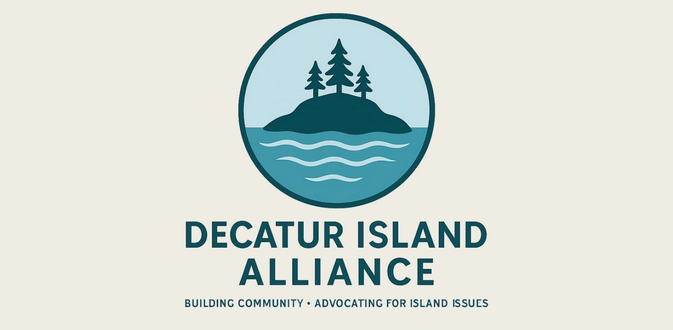— from Center for Whale Research —

L95 breaching in Haro Strait- October 24, 2015. Photo by Dave Ellifrit
We have previously and repeatedly voiced concern that the satellite tagging research program on Southern Resident Killer Whales being conducted by NOAA is far too invasive and risky to be pursued for this population, allegedly to obtain information that NOAA already has – the whereabouts of these whales in winter months to inform deliberations concerning designation of Critical Habitat for this Endangered population of whales. The Southern Resident Killer Whales (SRKW) whales travel to where the food can be found, and in this case the food is preponderantly Chinook salmon that are also Endangered due to human impacts over the past century. The surviving stocks of these anadromous / semilparous prey fish have a life cycle that involves spawning in freshwater rivers, hatching from eggs, transitioning to estuarine and marine waters in their juvenile life, migrating to productive coastal marine and near offshore areas where they mature to adulthood, and then returning to spawn in the rivers where they hatched. The surviving stock of the top predators of these salmon in our region (the SRKWs) travel within a wide range (from central California to northern British Columbia) to find and eat the mature and maturing salmon in their aggregations to feed and migrate for spawning. This is a very straight-forward predator/prey relationship that has co-evolved over tens of thousands of years, and it cannot be interrupted without consequence.
NOAA is responsible for ‘managing’ the human impacts on both of these species and their relationship, and by law must take action to prevent the extinction of the Endangered stocks and species in their charge. Theoretically, no Endangered species under NOAA jurisdiction may be legally “Taken” – that is killed, injured, harmed, harassed, etc. Yet, NOAA and the states within the range of the Chinook salmon allow their lethal takes with a fishing license for which a fee is paid (Commerce); and, NOAA issued itself a permit to “Take” by invasive research a number of SRKWs, including L95 that subsequently died undeniably as a result of his injury.
It was reported by NOAA that seven other SRKWs have been dart tagged “with no other failures.” but that is not really true. There have been several other dart implant failures on SRKWs that have left titanium petals or other hardware embedded in their tissues to fester and cause restructuring that opens a pathway for pathogens to enter the body core. The infection pathway and damage to the tissues caused by dart tagging Transient ecotype killer whales with essentially the same tag has led to numerous ugly and festering wounds, and at least two tagged whales are missing and presumed deceased (cause of death unknown – no carcass recovered). We consider the dart implant tagging method far too invasive and risky to be pursued for any species of cetacean, much less for an Endangered population of these beloved whales!
Lethal takes of the SRKW whales are bad enough, but the lethal take of the Chinook salmon prey stocks, including takes not only by fishing but also by ‘permitted’ ongoing destruction of habitat essential for natural completion of the salmon life cycle is risking the entire SRKW population to starvation. The mitigation for these destructive permitted takes is not working and is not sustainable (e.g. Snake River salmon spawning habitat destruction and mitigating hatcheries). The necropsies of SRKWs in recent years, and photographs of living animal body condition both reveal emaciation of these animals to an extent that affects their survival. Neither the natural run Chinook salmon nor the SRKWs can recover with the management status quo.
NOAA said that improper sterilization of the tag device was a contributing factor to the fungal infection found at the tag site and in the lungs of L95, as if proper sterilization in the future would prevent such infection. This is akin to saying that proper sterilization of your surgeon’s instruments, but not sterilization of the surgical site would prevent infection to you introduced by surgery. Our advice is, do not let the surgeon cut you open in that situation!
From the official necropsy report:
“The proximate cause of death may be attributed to the relatively deep tissue perforation with the tag deployment and the ultimate cause of mortality is disseminated mucormycosis.
“It could not be conclusively determined whether the fungus may have been introduced to the tag site by a contaminated tag or if the fungus may have colonized the skin prior to tag deployment, with introduction of hyphae into deeper tissues either via tracking the tag shaft or the retained petals acting as nidi of infection and inflammation.”
The titanium shafts and petals of the tag attachment device penetrate deep into the tissue of the whale and carry with them traces of the surface skin at the implant site – skin that is in constant contact with pathogens and fungi in the whale’s environment. And then, the large and deep wound created by the penetrating dart leaves open a pathway for infection for a significant time before healing, particularly if the attachment device breaks and leaves hardware in the whale’s deep vascularized tissue with a direct path from the skin via the broken shaft to blood supply to vital organs. This happens all too much:
It is a testament to the amazing resilience of these whales and their naturally powerful immune systems that they routinely survive superficial skin wounds (e.g., tooth rakes, accidental collisions with sharp objects), and they can survive very serious injuries (e.g., gunshot and harpoon impacts), but not always. Perhaps L95 was just unlucky – he happened to be tagged with an improperly sterilized implant tag that happened to pick up fungal hyphae from the water; the tag happened to be embedded deep in his tissue near blood vessels that provided a pathway to internal organs; and, perhaps unfortunately he happened to be immune system compromised at the time of tagging due to seasonal emaciation.
And, although L95 was deemed to be in moderate to fair nutritional condition, “A decline in nutritional status was observed in other southern resident killer whales that were present at the time L95 was tagged and has been noted in animals in previous years.” (see also J32 Necropsy report for example of another SRKW declined nutritional condition)
**If you are reading theOrcasonian for free, thank your fellow islanders. If you would like to support theOrcasonian CLICK HERE to set your modestly-priced, voluntary subscription. Otherwise, no worries; we’re happy to share with you.**








